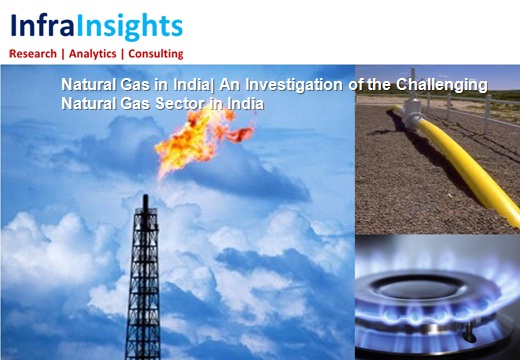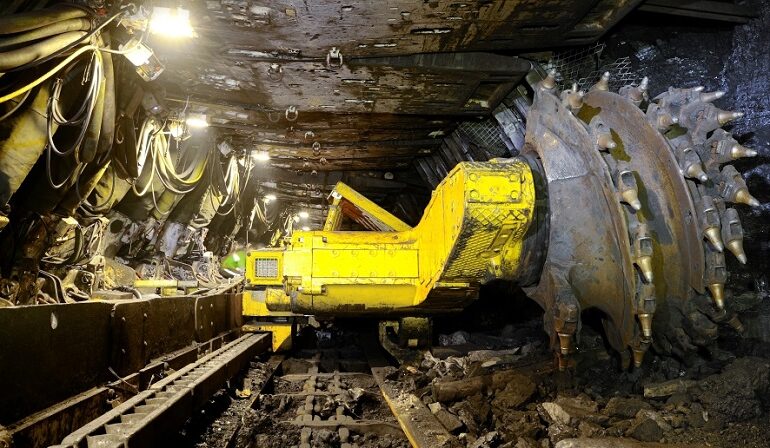The domestic natural gas sales by state-run and private/JV companies combined was ~97 MMSCMD in FY14 – Following a declining path over the last 3 years. The highest domestic natural gas sales in the last decade and possibly in the history of India had been 126 MMSCMD in FY11. While the industry had expected a further rise in the chart, on hopes of production ramp-up from KG Basin and addition of new sources in Mahanadi basin, in reality the domestic production declined drastically. India could only supply 93.98 MMSCMD in FY13 from domestic sources, a -14% CAGR from FY11. In the same year, the imported LNG share increased to 32% at nearly 41.46 MMSCMD of imported gas availability.
Interestingly, the decline in the domestic gas availability scenario has not been proportionately reflected in a spike in LNG imports in the country. While the imports have definitely increased in the last few years, the rise has been on at a CAGR of 6% between FY11 and FY13. While one of the key reasons for a modest increase in the LNG supplies being the high international LNG prices, another important factor could very well be the low domestic gas production itself. In order to absorb the price LNG, the pool/mix of domestic gas must also be enough. So while the gap in the demand supply scenario of natural gas in India gives a window of opportunity for LNG trade. The share of domestic gas in India’s gas basket facilitates the off-take of LNG in the country. In FY13 India imported 13.7 MMTPA of LNG on term and spot basis. New and potential options for LNG sourcing for India are Australia, North America, Mozambique, Angola, Russia, Qatar and Papua New Guinea. Given the natural gas market dynamics in India, it is for sure that LNG is perceived more as a stop-gap arrangement rather than a first preference. The LNG suppliers and investors will have to consider that and evaluate the opportunities of LNG business keeping in mind that the country can only absorb LNG at a given threshold share in the overall gas basket.
The Indian natural gas sector and its business landscape have many facets, such as: Government and its regulatory agencies (including the policy and guidelines), Exploration and Production, Natural Gas transportation, Natural Gas distribution, Natural Gas consumer base and different consumer segments, Natural Gas pricing, etc. Unfortunately, the sector is performing badly in almost all the said fronts. Where there is demand, there is no pipeline connectivity. Where there is pipeline connectivity, there is no gas to supply. The reserves are there, but deemed unviable given the current price realization to the E&P companies. The regulatory and policy framework is there, but no traction in the E&P and discoveries in the country. Where there are some interests, the E&P companies have faced a challenge in terms of getting the statutory approvals & clearances. No wonder, the country has witnessed exits of global Oil & Gas majors and zero private participation in the previously conducted NELP round.
A sigh of relief for the stakeholders in the Natural Gas sector in India is that there are potential hydrocarbon reserves (both, conventional and unconventional), which will be exploited in order to meet the growing need for energy. The overall in-place reserve stood 745 MMT (Oil plus Oil Equivalent Gas) at the end of FY13. All the same, the estimated natural gas reserves stood 1,355 bcm as on FY13. In terms of consumption, India is world’s fourth largest energy consumer. While the current energy consumption is nearly 660 MTOE, it is estimated that this would double in the next 15-20 years timeframe. However, in order to achieve success, the opportunity needs to blend with a positive business environment, something that the Indian ecosystem has a lot to work on.
Lately the sector has been showing some positive signals in this regard, such as: policy changes in E&P, development of RLNG terminals, uniformity in gas price and new gas pricing mechanism, growth & development plans of some of the leading private sector E&P companies (RIL and Cairn), bidding round of CGD projects, etc. The current and emerging Indian Natural Gas sector calls for an insightful and detailed study, that analyzes each and every development and emerging trend, and assess the impact of the same on different stakeholders of Natural Gas.
InfraInsights is pleased to announce its report, “Natural Gas in India| An Investigation of the Challenging Natural Gas Sector in India” which goes beyond crystal gazing and do an in-depth analysis through mix of research and analytics to investigate the opportunities, risks and challenges in Natural Gas sector in India.
The domestic natural gas sales by state-run and private/JV companies combined was ~97 MMSCMD in FY14 – Following a declining path over the last 3 years. The highest domestic natural gas sales in the last decade and possibly in the history of India had been 126 MMSCMD in FY11. While the industry had expected a further rise in the chart, on hopes of production ramp-up from KG Basin and addition of new sources in Mahanadi basin, in reality the domestic production declined drastically. India could only supply 93.98 MMSCMD in FY13 from domestic sources, a -14% CAGR from FY11. In the same year, the imported LNG share increased to 32% at nearly 41.46 MMSCMD of imported gas availability. Interestingly, the decline in the domestic gas availability scenario has not been proportionately reflected in a spike in LNG imports in the country. While the imports have definitely increased in the last few years, the rise has been on at a CAGR of 6% between FY11 and FY13. While one of the key reasons for a modest increase in the LNG supplies being the high international LNG prices, another important factor could very well be the low domestic gas production itself. In order to absorb the price LNG, the pool/mix of domestic gas must also be enough. So while the gap in the demand supply scenario of natural gas in India gives a window of opportunity for LNG trade. The share of domestic gas in India’s gas basket facilitates the off-take of LNG in the country. In FY13 India imported 13.7 MMTPA of LNG on term and spot basis. New and potential options for LNG sourcing for India are Australia, North America, Mozambique, Angola, Russia, Qatar and Papua New Guinea. Given the natural gas market dynamics in India, it is for sure that LNG is perceived more as a stop-gap arrangement rather than a first preference. The LNG suppliers and investors will have to consider that and evaluate the opportunities of LNG business keeping in mind that the country can only absorb LNG at a given threshold share in the overall gas basket. The Indian natural gas sector and its business landscape have many facets, such as: Government and its regulatory agencies (including the policy and guidelines), Exploration and Production, Natural Gas transportation, Natural Gas distribution, Natural Gas consumer base and different consumer segments, Natural Gas pricing, etc. Unfortunately, the sector is performing badly in almost all the said fronts. Where there is demand, there is no pipeline connectivity. Where there is pipeline connectivity, there is no gas to supply. The reserves are there, but deemed unviable given the current price realization to the E&P companies. The regulatory and policy framework is there, but no traction in the E&P and discoveries in the country. Where there are some interests, the E&P companies have faced a challenge in terms of getting the statutory approvals & clearances. No wonder, the country has witnessed exits of global Oil & Gas majors and zero private participation in the previously conducted NELP round. A sigh of relief for the stakeholders in the Natural Gas sector in India is that there are potential hydrocarbon reserves (both, conventional and unconventional), which will be exploited in order to meet the growing need for energy. The overall in-place reserve stood 745 MMT (Oil plus Oil Equivalent Gas) at the end of FY13. All the same, the estimated natural gas reserves stood 1,355 bcm as on FY13. In terms of consumption, India is world’s fourth largest energy consumer. While the current energy consumption is nearly 660 MTOE, it is estimated that this would double in the next 15-20 years timeframe. However, in order to achieve success, the opportunity needs to blend with a positive business environment, something that the Indian ecosystem has a lot to work on. Lately the sector has been showing some positive signals in this regard, such as: policy changes in E&P, development of RLNG terminals, uniformity in gas price and new gas pricing mechanism, growth & development plans of some of the leading private sector E&P companies (RIL and Cairn), bidding round of CGD projects, etc. The current and emerging Indian Natural Gas sector calls for an insightful and detailed study, that analyzes each and every development and emerging trend, and assess the impact of the same on different stakeholders of Natural Gas. InfraInsights is pleased to announce its report, “Natural Gas in India| An Investigation of the Challenging Natural Gas Sector in India” which goes beyond crystal gazing and do an in-depth analysis through mix of research and analytics to investigate the opportunities, risks and challenges in Natural Gas sector in India. |
| Table of Contents | |
| |

We create value for our customers by amalgamating deep functional and energy industry expertise. Our solutions range from in depth research reports to advisory services enabling our customers with energy market insights to take informed decisions, grow and improve on their competitiveness.
Leveraging our breadth of geographical reach we provide solutions in entire energy value chain be it coal, power, oil and gas or renewable. We are a reliable and efficient source comprising of best in class talent pool which provides answer to all the challenges of the energy industry.




